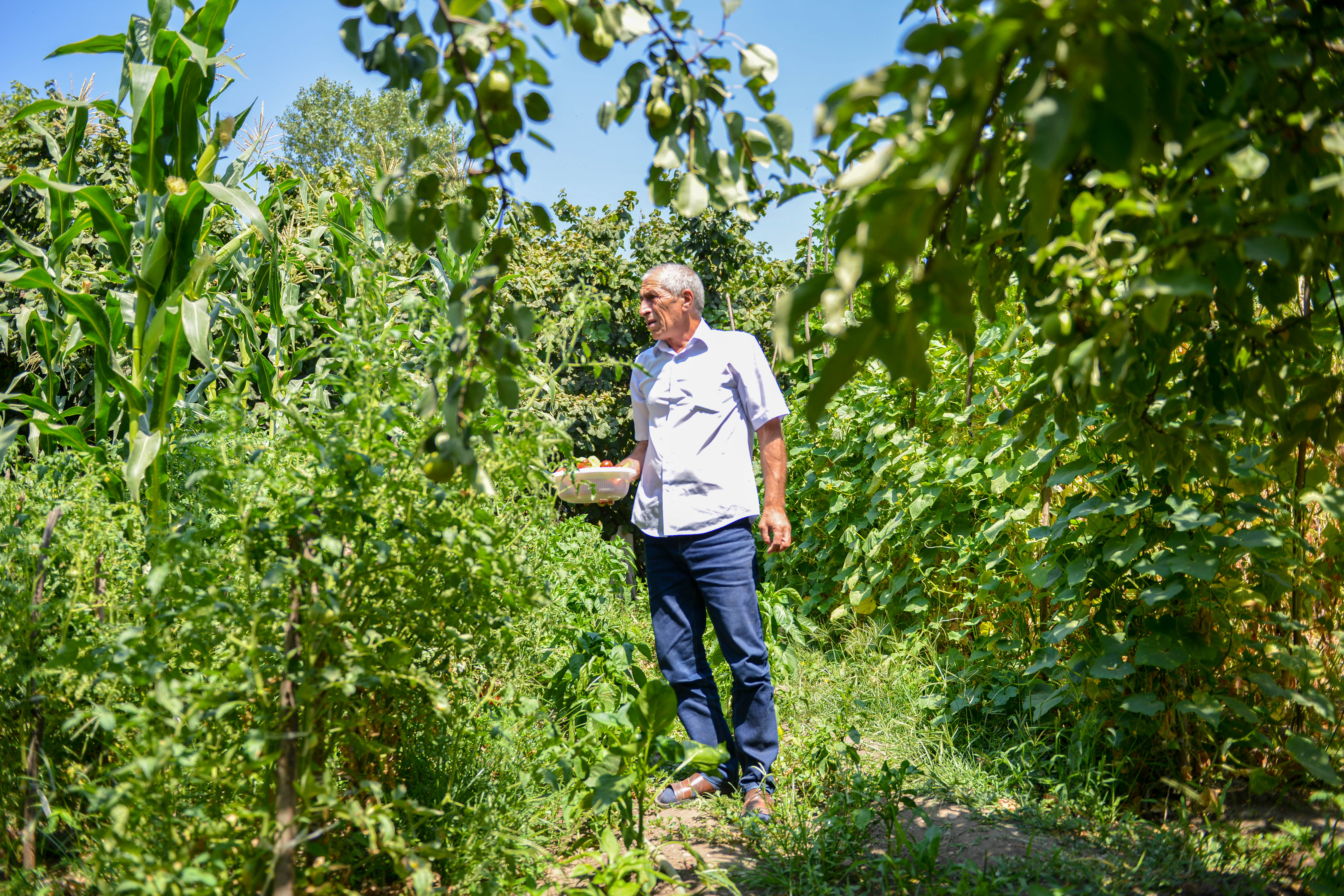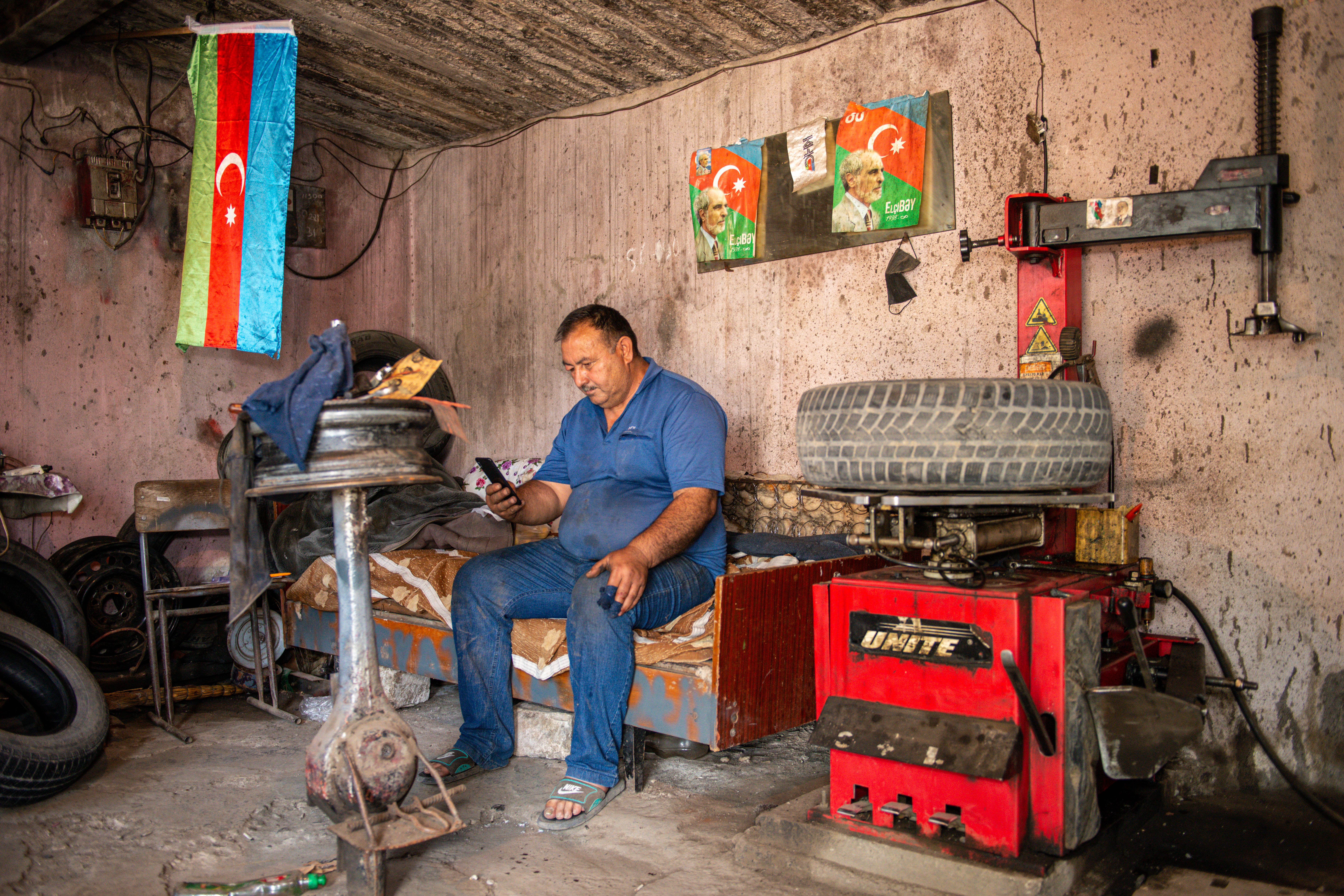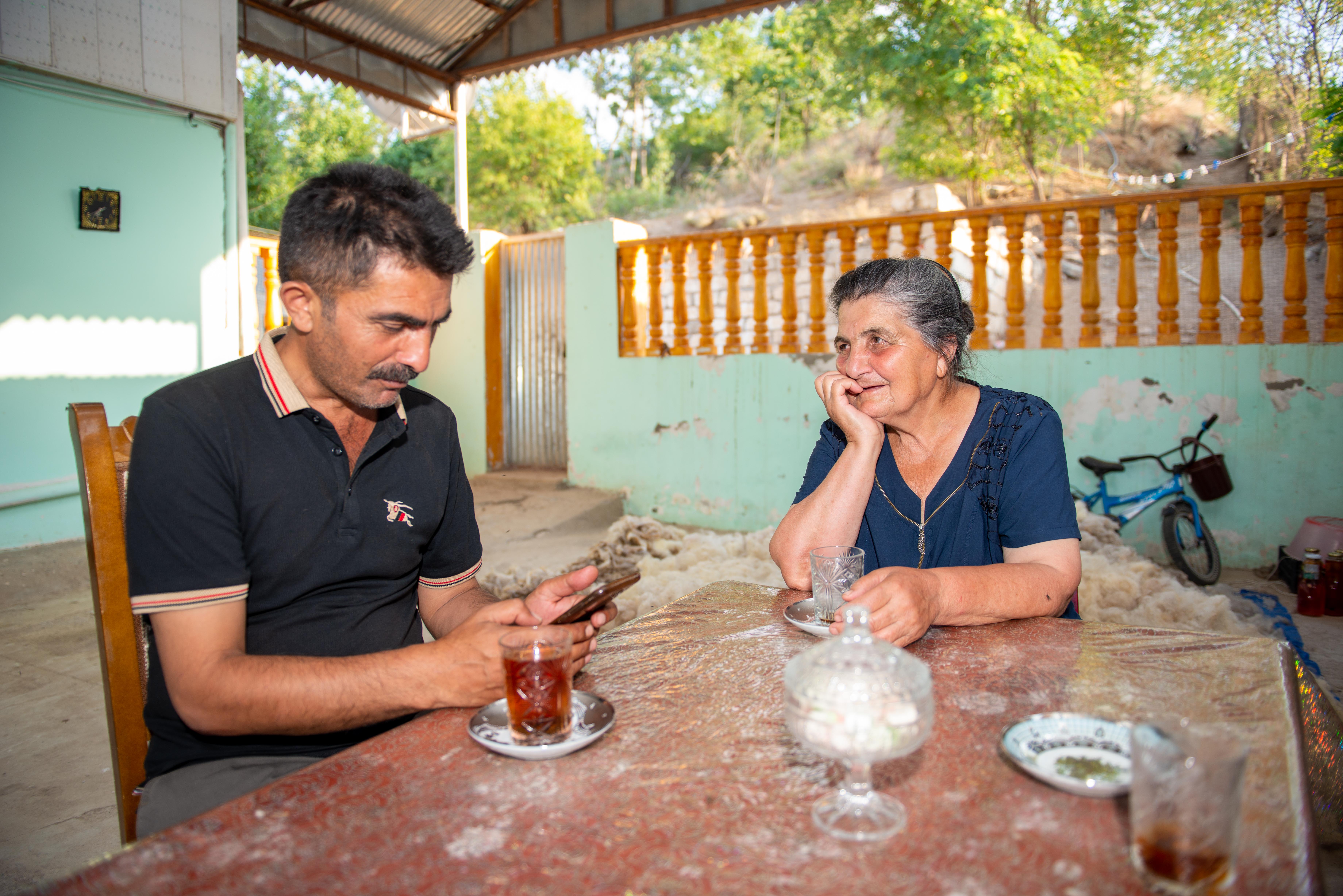Ilham Nasibov, 60, a former police officer, has spent the past two years chasing rumors about the fate of his native village, one of several reportedly included in the ceasefire agreement that ended the 2020 Nagorno-Karabakh war.
Ilham is originally from Upper Eskipara village, in Azerbaijan’s western Gazakh region. He fled when Azerbaijan lost the village during the first war with Armenia in the 1990s. It has been under Armenian control ever since. Today, Azerbaijani news outlets frequently publish stories about the future of his native village and six others: “The return of Gazakh villages is being discussed,” “Gazakh villages are already being evacuated,” “7 Gazakh villages are being returned.”
But for Ilham and other displaced Azerbaijanis, there is no sign the reports are true—and no word from officials that they are false. Stuck between rumors and disinformation, the communities are left to decipher what to believe.
"I’ve lost my faith. Despite the fact that two years have passed since the war, there is no official discussion about whether those lands will be returned or not,” he says.

60-year-old Ilham doesn’t trust media outlets and largely depends on his neighbors and others for the news. The lack of independent media in Azerbaijan has created an environment where disinformation “flourishes,” according to EUvsDisinfo.
In fact, despite media reports to the contrary, Upper Eskipara village was not included in the list of reclaimed Azerbaijani territory in the final 2020 ceasefire agreement with Armenia. In the first copy of the declaration signed between Armenia and Azerbaijan after the war, the “territories controlled by the Armenian side in the direction of the Gazakh region” (Sofulu, Barkhudarlı, Baganis Ayrim, Gizil Hajılı, Upper Eskipara, Lower Eskipara, Kheyrimli) were to be returned to Azerbaijan by November 20, 2020.
However, later the related article disappeared from the declaration, although the population was not informed.

“I watched TV channels the most during the war. I don't use the internet; I don't even want to watch TV for a while. Sometimes I watch it once a week, once every ten days. I am mainly trying to get information about my village,” he says.
Now, Ilham blames privately owned media outlets for deliberately manipulating the population. He says that the media should be controlled by the government in order to eliminate such situations.
In reality, nearly all media in Azerbaijan is controlled by the government, according to Reporters without Borders, which ranked Azerbaijan at 167 out of 180 countries in media freedom.
The situation is a perfect breeding ground for disinformation and manipulation, noted EUvsDisinfo, a platform that identifies disinformation cases originating in pro-Kremlin media that are spread across the EU and Eastern Partnership countries.
In its Paper on False Information: About the Azerbaijan-Armenian Conflict, Teyit, a Turkish fact-checking agency, said that during the 2020 war, 69.9 percent of the claims made related to the Nagorno-Karabakh conflict included false images associated with unrelated events.
Magsad Mirzayev, a mechanic in the city of Gazakh who was displaced from the village of Barkhudarli, says at first he did not believe the reports. But then he read that even Turkish President Rajab Tayyip Erdogan mentioned their return and he started to believe.
Two years later, however, his hope is fading. “How can the villages be returned? How can it be that these days the media writes that Russian troops are building a base in Lower Eskipara? People do not believe the lands will be given back,” he says.

Magsad complains that the internet was shut down during the war and that the population could not receive any information. “We mostly received information from Russian and Turkish TV channels.”
Magsad doesn't trust TV channels or rumors; he prefers to get his information online. He spends about six hours a day reading the news online or watching reports on YouTube, the BBC and Radio Liberty. He also watches Azerbaijani outlets online, but mostly he gets news from social media. “I don't go to news websites, I don't read newspapers,” he says, adding that he only believes about half of what he reads.
“I can tell from the headlines whether it is true or fake. Each citizen has a mind and wisdom, he should be able analyze whether the news he reads or listens to is false or true.”
Nizami Mammadov, 62, is originally from Upper Eskipara. After 15 years in the military—four in intelligence—he now works for the Gazakh Housing and Operation Department in the city of Gazakh. Even though he works in the local government, Nizami also struggles to determine which reports are true.
“After the end of the war, he [the Turkish president] said that these seven villages will be returned. But until today, we have received neither good nor bad news. We hear that everything will be good, that’s all,” he says.

Nizami, 62, thinks that the vast majority of the news online is there to scare the population. So, he does not use a smart phone. Nizami also does not trust word-of-mouth rumors, although he sometimes reaches out to his military friends for information.
During the war, he received information only from television. Although he says that "information given on television is 100 percent accurate," he says that he believes 30-40 percent of the reports.
“The war has been going on for almost 30 years. This war cannot be called a war. Iran and Iraq fought a war for 10 years and eight months. Now Iran and Iraq are quite friendly. We will be the same in the future.”
He thinks that the peaceful return of Gazakh village will take place in September-October at the latest. “And our previous neighborly relations will also be restored,” he adds.
Pensioner Sevil Hasanova, 72, spent the war period waiting for the word she could return home. Before Upper Eskipara came under the control of Armenia, she managed the kindergarten in the village.
“Everyone sees those villages in their dreams, we believe that we will return. Everyone wants to go and drink water from the springs there,” she says from her home in the village of Khanliglar, in Gazakh district.

Sevil, 72, counts on her son’s help to navigate news reports about her native village.

She says she spent the 2020 war in anticipation of the announcement they could return to Upper Eskipara.
Any news about Upper Eskipara on TV makes her happy. “We are about to pack up and leave.” Her son, Bakhtiyar Hidayat, notes: "She calls me to clarify when news about Upper Eskipara comes out.”
This feature story was prepared with support from the Friedrich-Ebert-Stiftung (FES) South Caucasus Regional Office. All opinions expressed are the author’s alone, and do not necessarily reflect the views of FES.
DONATE NOW

